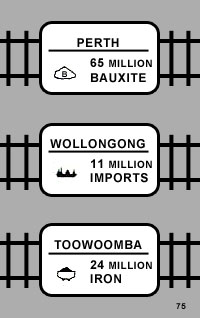Morbid.
Imagine creating something and having no idea that what you left was a legacy. Van Gogh did it with art. I would argue that Lovecraft did it with literary horror. As it turns out, the Call of Cthulhu is eternal....

Mansions of Madness is one of the many Cthulhu themed games put out by Fantasy Flight in the past few years. I jokingly refer to it as the heavy version of Betrayal at House on the Hill. In many cases, I think heavy versions of games tend to be clunkier and worse, but I think Mansions adds a pleasant depth to it that Betrayal is sorely lacking. I don't enjoy Betrayal, I do enjoy Mansions. On the other hand, Betrayal is very accessible to rookie gamers and Mansions is a bit overwhelming at first glance.
Mansions uses the Descent model of gameplay: one evil "game master" is trying his best to kill the rest of the players. Meanwhile, the players, or investigators, are doing their best to meet some objective. Problem is, at the beginning of Mansions, the investigators don't know what their win condition is!
 |
| Desire to fuck with that green thing = 0 (note: figs do not come painted) |
On an investigator's turn, he takes two moves and one action. The actions can be fighting, solving puzzles, or searching rooms (the most common action). On the Keeper's (evil game master) turn, he collects threat to fuel his card options which allow him to draw special cards, place monsters, move monsters, or do funky things. After, he attacks with any monsters that he can. In addition, time passes at the end of every keeper's turn, advancing towards the moment of big reveal.
Each investigator has a series of stats that affect how good they are at the game. Intelligent investigators get more turns to solve the puzzles*, fast investigators can evade enemies easily, and strong investigators can use axes and sledgehammers well. The game primarily uses a d10 compared to your stats to determine failure or success, so you know exactly what % likelihood you are to succeed.
* - The puzzles are the coolest part of the game mechanically speaking. Most are variations of the 15 puzzle you played as a kid. It isn't particularly difficult mentally to solve the puzzles, so it requires good stats, decent luck, but also requires you to use your actual brain. It's a nifty delivery mechanic that I really enjoy.

The investigators are trying to find clues in the mansion that will direct them to the main goal of the mission, but the clues reveal little information until the final clue is found. Alternatively, the investigators will find out the goal of the mission as the midnight bell chimes and then have several turns (probably 5 or so) to complete their task. One quirky aspect of Mansions is that if an investigator dies before this reveal, no big deal, that player finds a new investigator and joins the team. On the other hand, if you die after the reveal, you are out of the game. Several of the Keeper's objectives involve killing one of the players, but it only counts once the truth has been revealed. This leads to my least favorite aspect of the game: as the Keeper the ideal strategy seems to be to hurt everyone as much as possible without killing anyone before the reveal. As an investigator, your job is to find a lot of stuff and commit suicide if you are getting pretty hurt. That seems...off to me.
FUN: 4 - Mansions isn't a particularly in-depth game but I really like to play it. The flavor of the game is awesome and the pieces are pretty cool. Once you set up, the game play is smooth and fast (others might disagree but I've found 80% of the rules are simple/intuitive and 20% require some work). There is a part of the game where you just frantically are trying to solve things which can really ratchet up the energy. Mostly, what I enjoy about Mansions is the hilarious scenarios it can create. The game is certainly more fun if you have a group of friends who are into the storytelling aspects of games and have a little bit of roleplaying experience. The game readily lends itself to amusing, ridiculous, and creepy situations that make it a great time. Plus, my brother and I have solid evil laughs for when either of us is the Keeper.
STRATEGY: 1 - The trouble of playing a game where 50-80% of the players have no idea what the end goal is, is that, uh, those players have no idea what they are doing! Mansions is set up as a choice-based game but I have found that the set-ups lead to a pretty linear path for the players to follow. I rarely feel like I am making a complex choice about where to go and what to do. As an investigator, I found myself frustrated by the aspect of just 'doing whatever.' The only thing to really pay attention to as an investigator is what the Keeper is capable of doing, and doing your best to mitigate what he can do. The Keeper has a bit more versatility in action choices, but as I said above, I think the strategy is pretty straightforward: hurt as many people as much as possible without killing them.
SOCIAL: 4 - As the investigators you have to coordinate your turns, and depending on the scenario, sticking up or splitting up yields different rewards and benefits. Either way, what Mansions does really well is get people invested in their characters and the story - which makes it really easy for you to joke with your friends about the nun throwing holy water in the cultists eyes or the fact that Joe Diamond's figurine always looks like he is running down a hallway shooting as many guns as possible even though he isn't that much of a badass. Honestly, the social aspect of Mansions depends on your play group, but if the people are fun, then this game makes it incredibly easy to enjoy one another.
FLAVOR: 5 - This game just oozes flavor, which is exactly what you'd expect from a Cthulhu themed game by Fantasy Flight (let's ignore Elder Sign for now). The traumas you can go through are great (gah, my EYE). The insanity cards are amazing (one is called 'There's only one way out' that can only be played on a truly insane investigator. He kills himself.) The clues, while not particularly helpful, are sufficiently creepy. If you're the kind of person who likes flavor text, it exists on just about every card. You actually solve puzzle locks by solving puzzles. When you cast a spell, you flip over the card to see what happens because you have no real idea what power you are unlocking (my personal favorite tidbit of flavor). The monsters are slightly differentiated from each other, so you never know if this is the zombie that does more damage or is harder to escape. You can hide in a box. You can push a drawer in front of a door to slow down monsters. The lights can go out. A room can light on fire because the head cultist is insane and ultimately result in the death of the very monster he just summoned from the abyss (not that this happened in any of my games or anything). Cultists will explode and turn into bigger monsters. Sledgehammers do more damage if you are stronger, but knives don't. Rooms that you explore can have things, or they can have nothing (a card that literally says "nothing of interest"). You can only get claustrophobia while in small spaces. The list goes on and on and on...
MISCELLANEOUS: 2 - This one was hard because there are good and bad things that I am yet to address. I'll start with the good, even though I think the good is outweighed by the bad. The figs are awesome and the cardboard tiles are hefty. The art is solid and the game fills a unique niche for me. That being said, the game takes far too long to set up. We probably spend close to 15% of game time setting up. In addition, the base game comes with 5 scenarios with 3 different endings each, so far I've played 3 of the scenarios but I think even with the different endings the scenarios don't have a ton of variability. This means the game has a somewhat limited life as not knowing the end goal is one of the key mechanics of the game! All the cool pieces also come with a pretty hefty price tag of about 80$ at retail. Also, while I have talked about the rules being easy, there are lots of little things that are confusing where we just made up the rulings on the spot - this has generally worked out for us but it's a pain to not know what the correct way to play is because there are so many little tid bits of rules. Finally, there are a fair amount of typos in the set up manual which is a minor inconvenience, but regular enough for me to have noticed it (and I'm a math guy).
Parting thoughts on strategy: Most of the time, I find that ignoring the monsters is the best for the investigators as it can take a really long time to kill bad guys unless you are in groups. Make sure to take a careful review of the Keeper's action choices and move as a group (or separately!) accordingly. For instance, in one of the scenarios the Keeper can only summon madmen on investigators who are alone, so moving in groups of two can be a pretty sweet way to slow the Keeper down. As the Keeper, you have the most information, make sure to make good use of it and try not to give away the end goal to the players.
Good lucking keeping hold of your mind! May the rats eat your eyes!




















